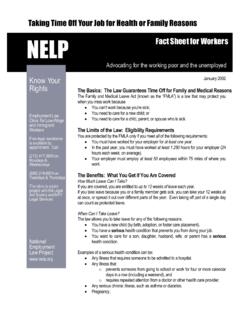Transcription of A Guide to Taking a Sexual History
1 Taking A Sexual HISTORYTAKING A Sexual HISTORYA Guide TOFor a more complete picture of your patient s health, the following Guide offers parameters for discussion of Sexual health issues. A Sexual History needs to be taken during a patient s initial visit, during routine preventive exams, and when you see signs of sexually transmitted diseases (STDs). The dialogue lends itself to the opportunity for risk-reduction counseling and sharing information about behaviors that may place your patient at risk of contracting STDs.
2 A Sexual History allows you to identify those individuals at risk for STDs, including HIV, and to identify appropriate anatomical sites for certain STD note:This Guide was created to help you determine the STD's risk among your patients. The impact of STDs on a patient s health can range from irritating to life threatening. Sexual health can greatly impact overall quality of Guide is meant to provide you with a sample of the discussion points and ques-tions that may be asked.
3 It is not meant to be a standard for diagnosis or a complete reference for Sexual History Taking . This Guide may need to be modified to be culturally appropriate for some patients based on culture or gender patients may not be comfortable talking about their Sexual History , sex partners, or Sexual practices. Try to put patients at ease and let them know that Taking a Sexual History is an important part of a regular medical exam or physical A Sexual HISTORYT aking a Sexual HistoryDIALOGUE WITH PATIENT> I am going to ask you a few questions about your Sexual health and Sexual practices.
4 I understand that these questions are very personal, but they are important for your overall health.> Just so you know, I ask these questions to all of my adult patients, regardless of age, gender, or marital status. These questions are as important as the questions about other areas of your physical and mental health. Like the rest of our visits, this information is kept in strict confidence. Do you have any questions before we get started?THE 5 P S OF Sexual HEALTHThe five P s stand for: Partners Practices Protection from STDs Past History of STDs Prevention of pregnancyThese are the areas that you should openly discuss with your patients.
5 You probably will need to ask additional questions that are appropriate to each patient s special situation or 5 P sPartners1To assess the risk of contracting an STD, it is important to determine the number and gender of your patient s sex partners. Remember: Never make assumptions about the patient s Sexual orientation. If only one sex partner is noted over the last 12 months, be certain to inquire about the length of the relationship. Ask about the partner s risk factors, such as current or past sex partners or drug use.
6 If more than one partner is noted in the last 12 months, be certain to explore for more specific risk factors, such as condom use (or non-use) and partner risk PartnersDIALOGUE WITH PATIENT> Are you currently sexually active? (Are you having sex?) If no, have you ever been sexually active?> In recent months, how many sex partners have you had?> In the past 12 months, how many sex partners have you had?> Are your sex partners men, women, or both? If a patient answers both repeat first two questions for each specific a patient has been sexually active in the past, but is not currently active, it is still important to take a Sexual a patient has had more than one sex partner in the past 12 months or has had sex with a partner who has other sex partners, you may want to explore further his or her Sexual practices and condom about other sex practices will Guide the assessment of patient risk, risk-reduction strategies.
7 The determination of necessary testing, and the identifica-tion of anatomical sites from which to collect specimens for STD PracticesDIALOGUE WITH PATIENT> I am going to be more explicit here about the kind of sex you ve had over the last 12 months to better understand if you are at risk for STDs.> What kind of Sexual contact do you have or have you had? Genital (penis in the vagina)? Anal (penis in the anus)? Oral (mouth on penis, vagina, or anus)?Protection from STDs3To learn more about the patient s Sexual practices, use open-ended questions.
8 Based on the answers, you may discern which direction to take the will need to determine the appro-priate level of risk-reduction counseling for each a patient is in a monogamous relationship that has lasted for more than 12 months, risk-reduction counseling may not be needed. However, in other situations, you may need to explore the subjects of absti-nence, monogamy, condom use, the patient s perception of his or her own risk and his or her partner s risk, and the issue of testing for Protection from STDsDIALOGUE WITH PATIENT> Do you and your partner(s) use any protection against STDs?
9 If not, could you tell me the reason?> If so, what kind of protection do you use?> How often do you use this protection? If sometimes, in what situations or with whom do you use protection?> Do you have any other questions, or are there other forms of protection from STDs that you would like to discuss today?Past History of STDs4A History of prior STDs may place your patient at greater risk Past History of STDsDIALOGUE WITH PATIENT> Have you ever been diagnosed with an STD? When? How were you treated?
10 > Have you had any recurring symptoms or diagnoses?> Have you ever been tested for HIV, or other STDs? Would you like to be tested?> Has your current partner or any former partners ever been diagnosed or treated for an STD? Were you tested for the same STD(s)? If yes, when were you tested? What was the diagnosis? How was it treated?Prevention of Pregnancy5 Based on partner information from the prior section, you may determine that the patient is at risk of becoming pregnant or of fathering a child.















